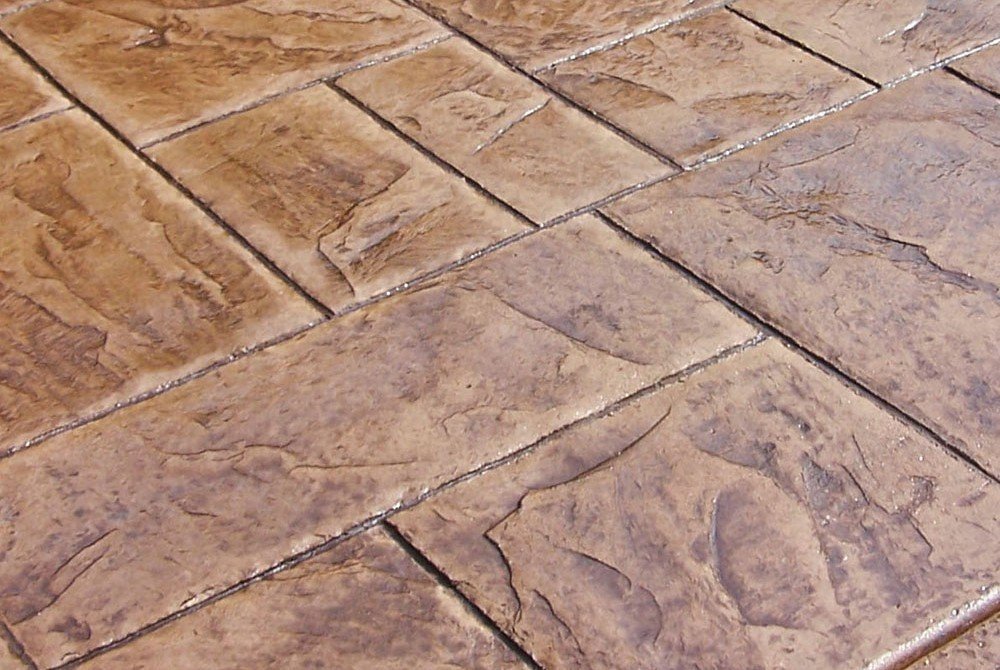Another advantage is the preservation of color and design. Stamped concrete can be crafted to mimic the look of natural stone or brick, adding aesthetic value to your outdoor space. However, without a proper seal, these vibrant colors can fade due to sun exposure and wear over time. When you seal stamped concrete, it helps to lock in the color, keeping your surface looking fresh and inviting for years to come.
Sealing stamped concrete also makes maintenance easier. A sealed surface is much simpler to clean, as dirt and stains are less likely to penetrate the finish. Regular sealing can make spot cleaning quick and hassle-free, allowing you to enjoy your outdoor areas without the worry of persistent stains or dirt buildup. This ease of maintenance contributes significantly to the overall appeal of stamped concrete as a low-maintenance option for your landscaping and hardscaping needs.
Finally, sealing your stamped concrete can enhance its slip resistance. Applying a quality sealant can create a textured surface that provides better traction, reducing the likelihood of slips and falls. This feature is particularly important around pools or in high-traffic areas, making sealed stamped concrete a safer option for families and guests alike.
Choosing the Right Sealant
One of the most popular options is an acrylic sealant, known for its ease of application and quick drying time. This type of sealant provides a beautiful, glossy finish that enhances the color of your stamped concrete. However, it may not offer the same level of durability as other options and might require more frequent reapplication. Keep this in mind if you're looking for long-lasting protection.
Another choice is a urethane sealant, which is more robust and provides superior protection against UV rays, water, and chemicals. Urethane sealants are perfect for high-traffic areas and can help prevent the fading and degradation of your stamped concrete. While they can be a bit more challenging to apply and may require specific conditions for optimal performance, the investment often pays off in terms of durability.
Lastly, consider epoxy sealants if you're seeking the highest level of protection. They form a tough, durable layer that is resistant to abrasions and stains, making them an excellent choice for heavier use areas. However, like urethane, they can have strict application conditions and may take longer to cure, so it’s essential to read the manufacturer's guidelines before proceeding.
Step-by-Step Sealing Process
When you're ready to seal stamped concrete, it's important to follow a clear step-by-step process to ensure the best results. Start by gathering all necessary materials, such as a high-quality concrete sealer, a roller or sprayer, and some protective gear like gloves and goggles. Safety should always be your first priority when working with chemical products.
Next, prepare the surface of your stamped concrete. Clean the area thoroughly to remove any dirt, debris, or stains. A pressure washer works well for this step, but if you don't have one, a stiff broom and a hose will do the trick. Allow the concrete to dry completely, as applying the sealer on a wet surface can lead to poor adhesion and uneven results.
Once your stamped concrete is clean and dry, it's time to apply the sealer. If you're using a roller, dip it into the sealer and start rolling it onto the surface, working in small sections. For larger areas, a sprayer may offer better coverage and make the process quicker. Make sure to follow the manufacturer's instructions regarding application techniques and drying times to achieve a clean, professional finish.
After the first coat has dried, inspect the surface for any missed spots or areas that require additional coverage. It's a good idea to apply a second coat to enhance durability and protection. Once you're satisfied with the application, allow the sealer to cure completely before using the area. Following these steps will ensure you effectively seal stamped concrete and prolong its beauty for many years to come.
Maintaining Your Sealed Surface
Additionally, wash the sealed surface regularly with a mild soap solution and water to remove any dirt or grime buildup. Avoid using harsh chemicals or abrasive cleaners, as these can break down the seal and damage the stamped design. A gentle pressure washer can be used occasionally, but be sure to keep the nozzle at a safe distance to prevent any damage to the surface.
Another important aspect of maintaining your sealed surface is to inspect it periodically for any signs of wear or damage. Look for areas where the seal might be cracking or peeling. If you notice any issues, it’s best to address them quickly. Reapplying sealant when necessary can help to protect the underlying concrete and ensure that your stamped concrete surface remains durable and attractive.
Lastly, during harsh weather conditions, such as extreme heat or freezing temperatures, take extra precautions. For example, applying a fresh layer of sealant before winter can provide an added layer of protection against ice and snow. By taking these simple steps, you can easily maintain your sealed surface and ensure that you enjoy the beauty and durability of your stamped concrete for years to come.
